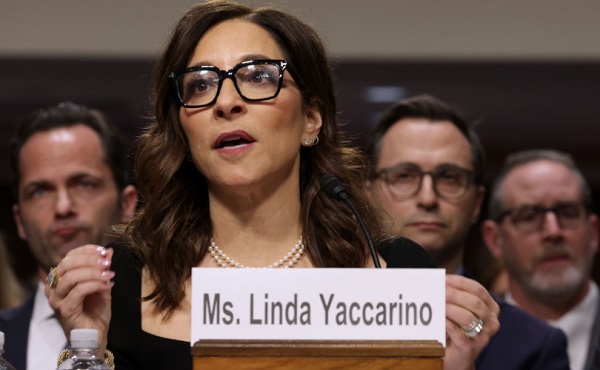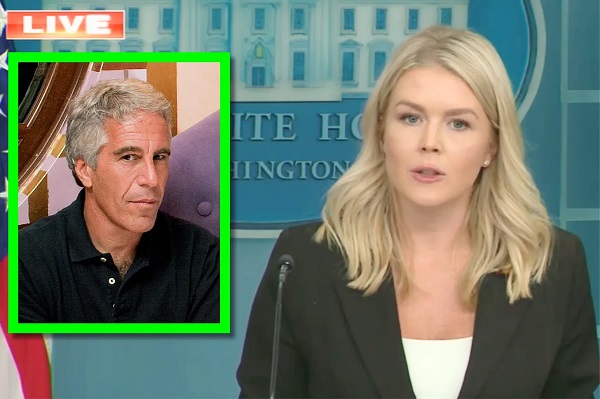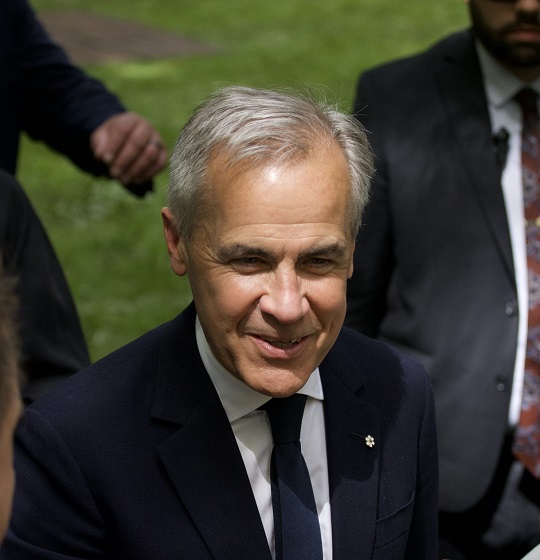Alberta
Canadian doctors claim ‘Charter right’ to mutilate gender-confused children in Alberta

From LifeSiteNews
The Canadian Medical Association says protecting kids from puberty blockers and surgeries infringes on physicians’ rights – not children’s health.
On May 28, the Canadian Medical Association filed a challenge against the constitutionality of Alberta’s 2024 legislation banning certain sex change surgeries and other “treatments” for children under age 16.
The CMA is arguing that the ban “violates their Charter right to freedom of conscience,” and claims that: “This is a historic and unprecedented government intrusion into the physician-patient relationship and requires doctors to follow the law rather than clinical guidelines, the needs of patients and their own conscience.”
The CMA does not mention that sex changes for children are “historic and unprecedented,” and that medical bodies around the world are increasingly condemning these practices as an unprecedented scandal. The U.K. has banned puberty blockers for minors after the National Health Service commissioned Dr. Hilary Cass to conduct a sweeping analysis of the available evidence; Finland, Sweden, Argentina, and the United States are all taking similar steps.
Premier Danielle Smith’s UCP government passed three bills last year, including bans on sex change surgeries for minors under 17 and the “use of puberty blockers and hormone therapies for the purpose of gender reassignment or affirmation” for those under 15. The National Post reported in 2023 that hundreds of girls under the age of 18 have received double mastectomies.
The CMA, which allegedly represents over 75,000 doctors, is “specifically challenging the bill that blocks doctors from prescribing hormone therapy and puberty blockers to children under 16 and bans gender-affirming surgeries for those under 18,” according to the CBC. Without irony, Dr. Jake Donaldson, one of the three doctors behind the challenge, stated that the child protection law places him in a “state of moral crisis.”
“It is encroaching upon sort of the autonomy of physicians and our ability to provide what we believe is best, and individualized, evidence-based care for patients,” the Calgary-based doctor stated. “It forces me to sort of stand on the sidelines and refuse to provide care to patients who would otherwise, in all likelihood, significantly benefit from it.”
According to the CBC, Donaldson has “roughly 40 young patients who receive the kinds of treatment the law outlaws, although an exemption clause in the legislation means those patients aren’t being cut off.” According to Donaldson: “From the standpoint of gender-affirming care, what we are able tochild do in the medical world is help people. There’s good evidence behind what we’re doing, [and] there are guidelines that we follow. Nobody’s making decisions willy-nilly.”
Neither Donaldson nor the CBC mentioned the growing body of evidence that reveals the permanent, irreversible damage caused by these “treatments,” including the impact on brain development, reduction in the density of bones, stunting of growth, risk of barring the user from reaching peak IQ, inhibiting sexual function, thickening of the blood, heightening the risk of heart attack by up to five times, creation of a higher risk of blood clots and cancer, and vaginal atrophy, as well as the potential for lifelong sterility.
“It’s not unprecedented for the CMA to get involved in legal matters, but it was unprecedented for a bill in Canada to restrict the ability for physicians to offer advice to patients,” said Dr. Joss Reimer, president of the CMA.
Heather Jenkins, press secretary for Alberta Justice Minister Mickey Amery, stated by email that “Alberta’s government will vigorously defend our position in court,” and that the law protects children from making “irreversible decisions.”
LGBT activist groups Egale Canada and the Skipping Stone Foundation, as well as five Alberta families, have already launched Charter challenges against the three bills, and filed for an injunction. The hearing for the injunction took place in March, but there is no ruling as yet.
Premier Danielle Smith has said she will use the Charter’s notwithstanding clause “as a last resort” to ensure her protective legislation is implemented.
Alberta
Cross-Canada NGL corridor will stretch from B.C. to Ontario
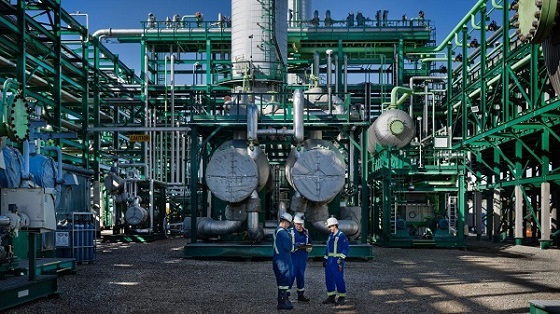
Keyera Corp.’s natural gas liquids facilities in Fort Saskatchewan. Photo courtesy Keyera Corp.
From the Canadian Energy Centre
By Will Gibson
Keyera ‘Canadianizes’ natural gas liquids with $5.15 billion acquisition
Sarnia, Ont., which sits on the southern tip of Lake Huron and peers across the St. Clair River to Michigan, is a crucial energy hub for much of the eastern half of Canada and parts of the United States.
With more than 60 industrial facilities including refineries and chemical plants that produce everything from petroleum, resins, synthetic rubber, plastics, lubricants, paint, cosmetics and food additives in the southwestern Ontario city, Mayor Mike Bradley admits the ongoing dialogue about tariffs with Canada’s southern neighbour hits close to home.
So Bradley welcomed the announcement that Calgary-based Keyera Corp. will acquire the majority of Plains American Pipelines LLP’s Canadian natural gas liquids (NGL) business, creating a cross-Canada NGL corridor that includes a storage hub in Sarnia.
“As a border city, we’ve been on the frontline of the tariff wars, so we support anything that helps enhance Canadian sovereignty and jobs,” says the long-time mayor, who was first elected in 1988.
The assets in Sarnia are a key piece of the $5.15 billion transaction, which will connect natural gas liquids from the growing Montney and Duvernay plays in B.C. and Alberta to markets in central Canada and the eastern U.S. seaboard.
NGLs are hydrocarbons found within natural gas streams including ethane, propane and pentanes. They are important energy sources and used to produce a wide range of everyday items, from plastics and clothing to fuels.
Keyera CEO Dean Setoguchi cast the proposed acquisition as an act of repatriation.
“This transaction brings key NGL infrastructure under Canadian ownership, enhancing domestic energy capabilities and reinforcing Canada’s economic resilience by keeping value and decision-making closer to home,” Setoguchi told analysts in a June 17 call.
“Plains’ portfolio forms a fully integrated cross Canada NGL system connecting Western Canada supply to key demand centres across the Prairie provinces, Ontario and eastern U.S.,” he said.
“The system includes strategic hubs like Empress, Fort Saskatchewan and Sarnia – which provide a reliable source of Canadian NGL supply to extensive fractionation, storage, pipeline and logistics infrastructure.”
Martin King, RBN Energy’s managing director of North America Energy Market Analysis, sees Keyera’s ability to “Canadianize” its NGL infrastructure as improving the company’s growth prospects.
“It allows them to tap into the Duvernay and Montney, which are the fastest growing NGL plays in North America and gives them some key assets throughout the country,” said the Calgary-based analyst.
“The crown assets are probably the straddle plants in Empress, which help strip out the butane, ethane and other liquids for condensate. It also positions them well to serve the eastern half of the country.”
And that’s something welcomed in Sarnia.
“Having a Canadian source for natural gas would be our preference so we see Keyera’s acquisition as strengthening our region as an energy hub,” Bradley said.
“We are optimistic this will be good for our region in the long run.”
The acquisition is expected to close in the first quarter of 2026, pending regulatory approvals.
Meanwhile, the governments of Ontario and Alberta are joining forces to strengthen the economies of both regions, and the country, by advancing major infrastructure projects including pipelines, ports and rail.
A joint feasibility study is expected this year on how to move major private sector-led investments forward.
Alberta
Alberta school boards required to meet new standards for school library materials with regard to sexual content

Alberta’s government has introduced new standards to ensure school library materials are age-appropriate.
School libraries should be safe and supportive places where students can learn and explore without being exposed to inappropriate sexual content. However, in the absence of a consistent standard for selecting age-appropriate library materials, school boards have taken different approaches, leading to concerns about safeguards in place.
In response to these concerns, and informed by feedback from education partners and the public, Alberta’s government has created standards to provide school boards with clear direction on the selection, availability and access to school library materials, such as books.
“Our actions to ensure that materials in school libraries don’t expose children to sexual content were never about banning books. These new standards are to ensure that school boards have clear guidance to ensure age-appropriate access to school library materials, while reflecting the values and priorities of Albertans.”
The new standards set clear expectations for school library materials with regard to sexual content and require school boards to implement policies to support these standards.
Standards for school library materials
Under the new standards, school libraries are not permitted to include library materials containing explicit sexual content. Non-explicit sexual content may be accessible to students in Grade 10 and above, provided it is age-appropriate.
“Protecting kids from explicit content is common sense. LGBTQ youth, like all children, deserve to see themselves in stories that are age-appropriate, supportive and affirming – not in material that sexualizes or confuses them.”
School boards must also regularly review their school library collections, publish a full list of available materials and ensure that a staff member supervises students’ access to school library materials. School boards will have to remove any materials with explicit sexual content from their school libraries by October 1.
School board policies and procedures
All school boards must have publicly available policies that align with the new standards for selecting and managing library materials by January 1, 2026. School boards can either create new policies or update existing ones to meet these requirements.
These policies must outline how school library materials are selected and reviewed, how staff supervise students’ access throughout the school day, and how a student, parent, school board employee or other member of the school community can request a review or removal of materials in the school library. School boards are also required to clearly communicate these policies to employees, students and parents before January 2026.
“A robust, grade- and age-appropriate library catalogue is vital for student success. We welcome the ministry’s initiative to establish consistent standards and appreciate the ongoing consultation to help craft a plan that will serve our families and communities well.”
“Red Deer Public Schools welcomes the new provincial standards for school library materials. Our division is committed to maintaining welcoming, respectful learning spaces where students can grow and thrive. Under the new standards for school libraries, we remain dedicated to providing learning resources that reflect our values and support student success.”
Quick facts
- The new standards will apply to public, separate, francophone, charter and independent schools.
- The ministerial order does not apply to municipal libraries located within schools or materials selected for use by teachers as learning and teaching resources.
- From May 26 to June 6, almost 80,000 people completed an online survey to provide feedback on the creation of consistent standards to ensure the age-appropriateness of materials available to students in school libraries.
Related information
- Ministerial Order
- School library standards engagement
- Reference Materials: Content warning: this document contains graphic content that may be disturbing to viewers and is not appropriate for young viewers. Viewer discretion is advised.
-

 Alberta2 days ago
Alberta2 days agoCross-Canada NGL corridor will stretch from B.C. to Ontario
-

 Business2 days ago
Business2 days agoMost Canadians say retaliatory tariffs on American goods contribute to raising the price of essential goods at home
-
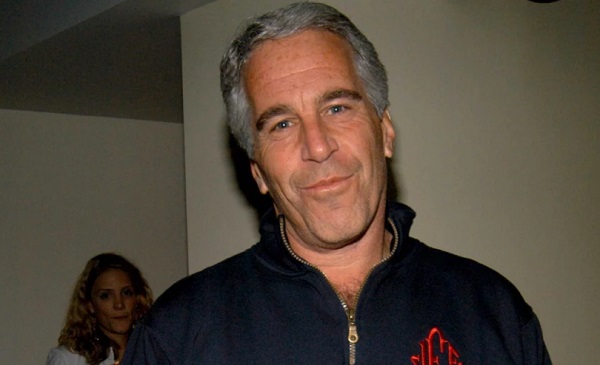
 Crime2 days ago
Crime2 days ago‘We’re Going To Lose’: Steve Bannon Warns Withholding Epstein Files Would Doom GOP
-

 Business2 days ago
Business2 days agoB.C. premier wants a private pipeline—here’s how you make that happen
-

 National2 days ago
National2 days agoWomen and girls beauty pageant urges dismissal of transgender human rights complaint
-
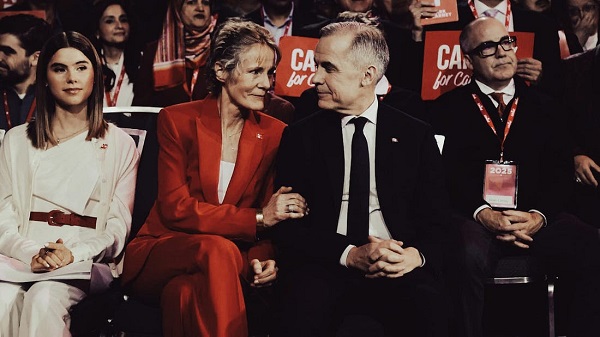
 Business1 day ago
Business1 day ago103 Conflicts and Counting Unprecedented Ethics Web of Prime Minister Mark Carney
-

 illegal immigration19 hours ago
illegal immigration19 hours agoICE raids California pot farm, uncovers illegal aliens and child labor
-

 Business14 hours ago
Business14 hours agoTrump to impose 30% tariff on EU, Mexico




